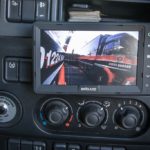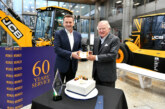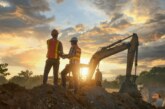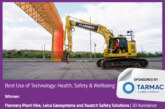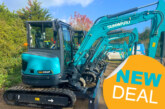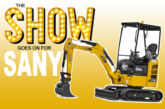Britain is set for a boom in construction equipment purchases thanks to ambitious UK Government plans to kickstart the economy – but this could lead to a rise in vehicle and worker related collisions, warns a leading vehicle safety company.
Chancellor Rishi Sunak announced a super-deduction tax break that means that businesses can claim 130% of what they spend on equipment against taxable profits.
The £25bn tax break is intended to spark investment by providing 25p off company tax bills for every pound of qualifying spend on plants and machinery.
But experts at pioneering Brigade Electronics says the expected explosion of construction projects sparked by the tax break could be matched by a rise in on-site collisions.
Construction is a hazardous occupation and research has shown that on average, 7 workers are killed and 93 are seriously injured each year after accidents involving vehicles or mobile plant.
Driver visibility is often compromised due to the sheer size and weight of mobile plant equipment which poses a very real danger to site workers. Blind spots on vehicles are a major contributing factor to collisions and are often the main reason ground workers are killed or injured. Poor visibility, due to low light and overnight working, dusty environments and difficult weather conditions, all exacerbate this issue. Meanwhile hearing defenders, often worn by ground worker’s, can also reduce the ability to clearly hear approaching vehicles.
Vehicle safety systems are helping to address the issues related to vehicle and worker safety. While passive systems, such as mirrors and cameras, assist drivers by enabling them to see objects in a vehicle’s blind spot, active systems, including operator alerts and reversing alarms, ensure that both drivers and pedestrians receive an immediate, audible warning that a danger is present.
 Emily Hardy of Brigade Electronics, a global leader in vehicle safety systems, explains the importance of active systems in addition to traditional passive devices.
Emily Hardy of Brigade Electronics, a global leader in vehicle safety systems, explains the importance of active systems in addition to traditional passive devices.
“Work sites present a number of challenges when it comes to visibility. Not only are they dusty and dirty places to be, but when this is combined with nighttime hours or difficult weather conditions, it can become increasingly dangerous for ground workers to be spotted by those operating moving vehicles. Active safety systems are therefore crucial to assisting drivers and enhancing safety for workers operating in these environments. This is why we always recommend that a combination of both passive and active systems, such as cameras and alarms, are fitted to vehicles for the ultimate safety solution.”
This includes Brigade’s award-winning Backeye®360, designed to assist low speed manoeuvrability by providing the driver with a real-time surround view of the vehicle in a single image. The system combines images from ultra-wide angle cameras, presenting a ‘bird’s-eye view’ of the vehicle and surrounding areas on the monitor, meaning drivers can clearly see people and objects as they manoeuvre their vehicles.
Active technology such as Brigade’s radar obstacle detection system can detect stationary and moving objects even in the harshest of environments, including in darkness, giving the driver an audible and visible warning when objects are within a certain distance. Heavy duty radar systems, which are waterproof and smoke resistant, can even operate in high or low temperatures, and can easily be heard in noisy environments, making them ideal for construction sites.
One construction company which has benefited from installing safety technology on its vehicles is Day Aggregates. It fitted Brigade’s Backsense heavy duty radar sensor system onto its fleet of shovel loaders, tele-handlers and trucks.
In the last few years of recording incidents, which are split by ‘damage’ and ‘near miss’, the company has reported that this technology has been key to reducing incidents and improving safety.
Operator Darren Harfield agrees. He said: “The radar is an extra back up when looking in numerous mirrors and using reversing aids. If you’re distracted, for example because someone suddenly asks you a question on the radio, you can be trying to take in too much at one time. The radar system prevents this. There’s an in-cab display that presents different colours and beeps when anything comes within a certain distance of the vehicle, so it’s not just visual prompts, but audible alerts too.”

